Workshop Start :at 10:00 – at 13:00 – at 16:00 in Sultanahmet
Duration : 2 Hours
Type : Turkish Marbling ( Ebru ) Art
Place : Sultanahmet / Ishakpasa Street No : 6
Includes : Professional Artists, Equipments, Workshop Area, Aprons & Gloves
Prices :
1 Person : 50 Euro
1 Child ( 3 to 10 ages ) : 35 Euro Per Child
6 People and more : Write Us
TURKISH MARBLING, EBRU
Marbled paper, called ebru in Turkish, was used extensively in the binding of books and within the calligraphic panels in Turkey. The existing word ebre in Eastern Turkish, meaning variegated, points to the fact that marbling might have been known by the populations of Central Asia. Its origin might ultimately hark back to China, where a document from the T’ang dynasty (618-907) mentions a process of coloring paper on water with five hues. In the early examples from the 16th c. in the Ottoman-Turkish era, ebru appears in the battal (stone) form, namely without any manipulation. Interestingly, several variations developed in time, giving us types such as gelgit, tarakli, hatip, bülbül yuvasi, çiçekli (respectively come-and-go, combed, preacher, nightingale’s nest, flowered, etc.) An attempt has been made here to show some of its principal patterns, with samples by the master marblers of this century chosen from our collection.
Ebru technique consists of sprinkling colours containing a few drops of ox-gall on to the surface of the bath sized with kitre (gum tragacanth) in a trough. By carefully laying the paper over the bath, the floating picture on top of it is readily transferred to the paper; thus, each ebru is a one of a kind print. To obtain beautiful ebru results, one needs to have a light hand, refined taste, and an open mind to the unexpected patterns forming on the water. Patience and a good knowledge of traditional culture are characteristic of ebru masters.
After the 1550’s, booklovers in Europe prized ebru, which came to be known as ‘Turkish papers’. Many specimens in their collections and in the several album amicorum books are visible today in various museums. Also, early texts dealing with ebru, such as “Discourse on decorating paper in the Turkish manner”, published in 1664 by Athanasius Kircher in Rome, helped to disseminate the knowledge of this kind of marbling art. There is agreement amongst scholars that the so-called Turkish Papers played a colourful influence on the book arts in Europe.
Ebru Marbling is a unique art which many painting and design lovers like to do in their spare time and especially demonstrate to their friends on different occasions. Nevertheless, this spectacular piece of art does have many applications in daily life where it is used to enhance the decor and look of the goods. This patterned paper is extensively used in the binding of books and within the calligraphic panels in Turkey. In addition to this, “ebru” works are often framed as pictures and used all over the world as a piece of decoration. Other than paper work, the pattern is often designed on leather, glass, cloth, furniture, book covers, notebooks, invitations, and many other areas to reflect the unique glamour of this art.

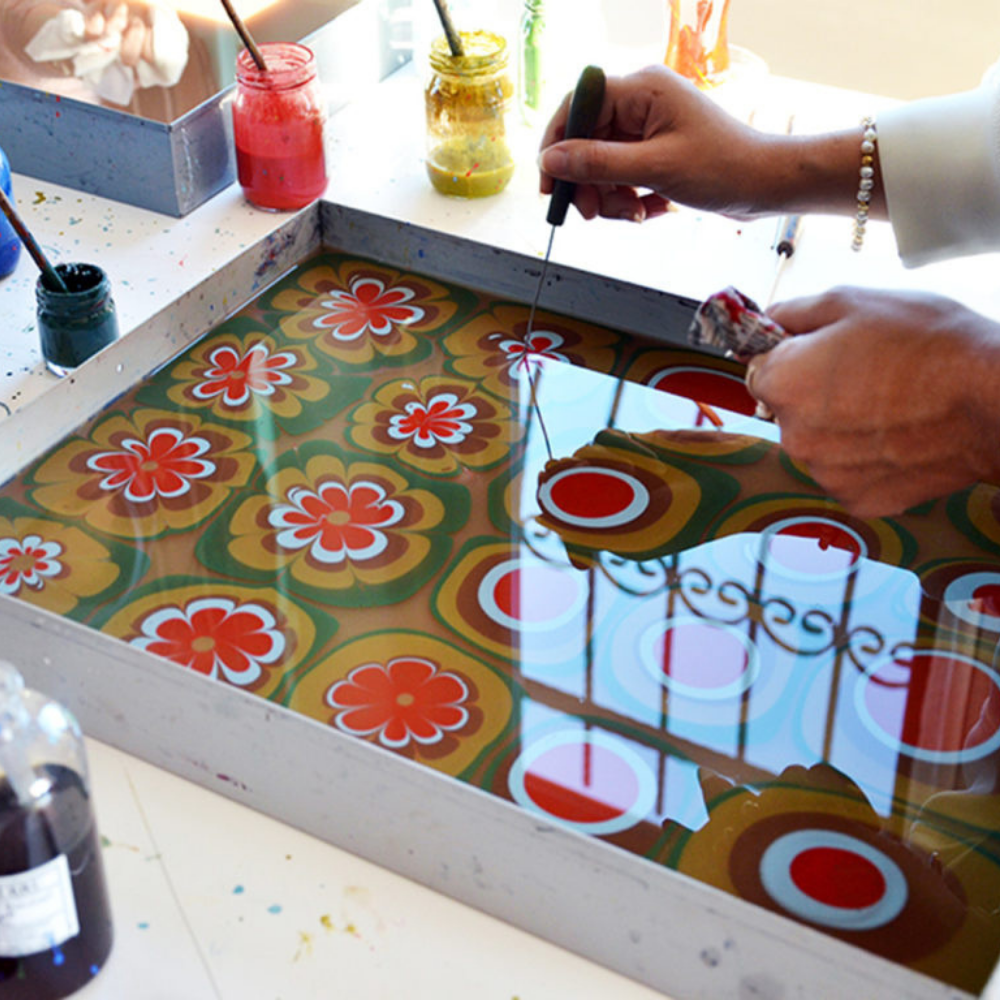
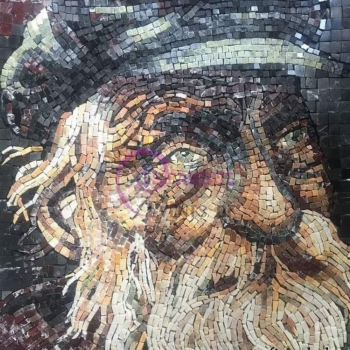
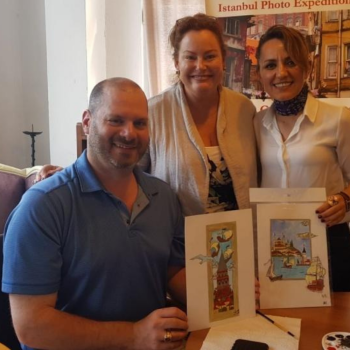
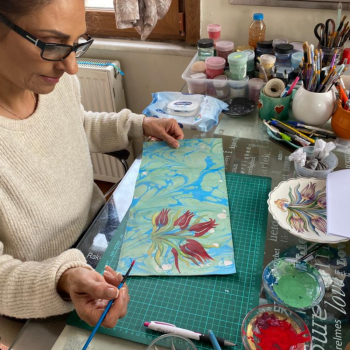
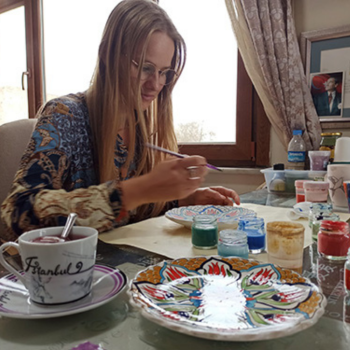
Reviews
There are no reviews yet.